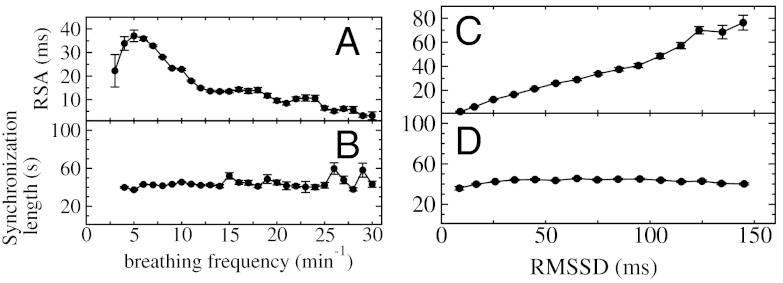Fig. 7.
RSA and phase synchronization involve different mechanisms of cardiorespiratory coupling. (A) RSA gradually increases (> 250%) with decreasing breathing frequency and drops abruptly for very low breathing frequencies (Spearman’s rank order correlation, ρ = -0.42, p < 10-3). (B) In contrast to RSA, the length of phase-synchronization episodes is independent of the breathing frequency (Spearman ρ ≈ 0, p < 10-3). (C) RSA strongly increases with increasing values of RMSSD of heartbeat RR intervals (i.e., σΔRR, a measure of parasympathetic tone; ref. 25) (Spearman ρ = 0.69, p < 10-3). (D) In contrast to RSA, the length of phase-synchronization episodes does not significantly change with RMSSD (Spearman ρ ≈ 0, p < 10-3). Error bars represent the standard error. See Materials and Methods for the procedure used to obtain these dependencies. Data are averaged over all sleep stages and age groups.

